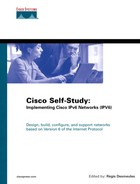Path MTU Discovery (PMTUD) for IPv6
As described in RFC 1191, the path MTU discovery (PMTUD) mechanism was defined for IPv4 in 1990; it is not new to the IPv6 protocol. However, in IPv4 PMTUD is optional and is not commonly used by nodes.
The main goal of PMTUD is finding out the MTU value along a path when a packet is sent to a destination to avoid fragmentation. Then the source node can use the maximum MTU size found to communicate with the destination node. Fragmentation may occur in intermediary routers when the packet is larger than the link layer's MTU. Fragmentation is a harmful and costly operation in terms of CPU cycles for routers. Moreover, in some circumstances, fragmentation over fragmentation might occur in several intermediate routers along a delivery path, causing a decrease in performance.
Fragmentation in IPv6 is not performed by intermediary routers. The source node may fragment packets by itself only when the path MTU is smaller than the packets to deliver. As described in RFC 2460, Internet Protocol, Version 6 (IPv6) Specification, it is strongly recommended that IPv6 nodes implement PMTUD for IPv6 to avoid fragmentation.
As defined in RFC 1981, Path MTU Discovery for IP version 6, PMTUD for IPv6 uses ICMPv6 error message Type 2, Packet Too Big, for its operation. Figure 3-2 shows an example of PMTUD for IPv6 used by a source node. First, the source node that sends the first IPv6 packet to a destination node uses 1500 bytes as the MTU value (1). Then, the intermediary Router A replies to the source node using an ICMPv6 message Type 2, Packet Too Big, and specifies 1400 bytes as the lower MTU value in the ICMPv6 packet (2). The source node then sends the packet but instead uses 1400 bytes as the MTU value; the packet passes through Router A (3). However, along the path, intermediary Router B replies to the source node using an ICMPv6 message Type 2 and specifies 1300 bytes as the MTU value (4). Finally, the source node resends the packet using 1300 bytes as the MTU value. The packet passes through both intermediary routers and is delivered to the destination node (5). The session is now established between source and destination nodes, and all packets sent between them use 1300 bytes as the MTU value (6).
The MTU values found by PMTUD for IPv6 are cached by source nodes. With Cisco IOS Software technology, you can display the PMTUD values cached per destination using the command show ipv6 mtu. The syntax of this command follows:
Router#show ipv6 mtu

